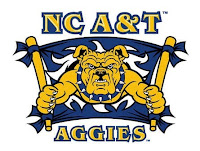The most active members included those in our Education Program. These universities celebrated in various ways--from planting to advocating legislation to “Ecochella”--throughout the month.
Here are some of the events that took place:
UC-Davis CAES planted tomatoes on a beautiful Earth Day.
 |
| Photo from UC-Davis CAES Facebook Page and @fruitscilab |
Cornell University loves Earth Day so much, they’ve been celebrating April as “Sustainability Month” for more than a decade. This year, they are advocating for the carbon bill and collaborating with PBS to connect people with nature.
The Ohio State University is celebrating Arbor Day on April 26--a celebration that has been part of the university since 1870.
University of Arkansas is celebrating Earth Day all week with various events across campus, including an Earth Day Fair where students are learning to roll sushi. They’re even taking selfies for NASA.
 |
| Photo from The Arkansas Traveler |
Iowa State University hosted a week filled with events, including a rally, all focused on creating a more sustainable campus.
 |
| Photo from Mia Wang, the Iowa State Daily |
University of Missouri-Columbia celebrated early (April 8-13) with events such as “Sustainapalooza” and “Ecochella.”
Stand in rank with some of the top agricultural schools in the United States.
Learn more about our Educational Program by contacting us at 515-292-2125 or visiting our website at www.cast-science.org.











 Released March 22, 2017, CAST IP 57,
Released March 22, 2017, CAST IP 57,